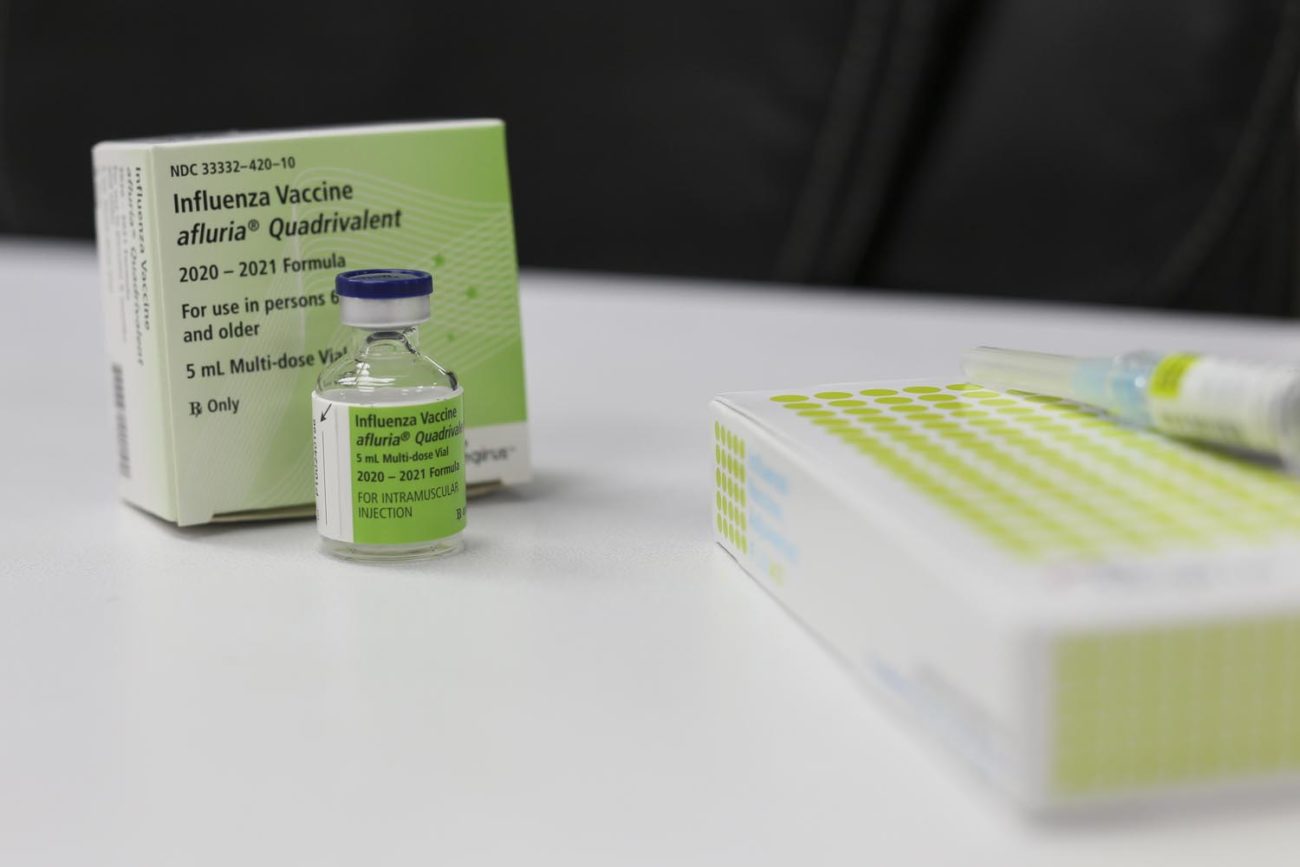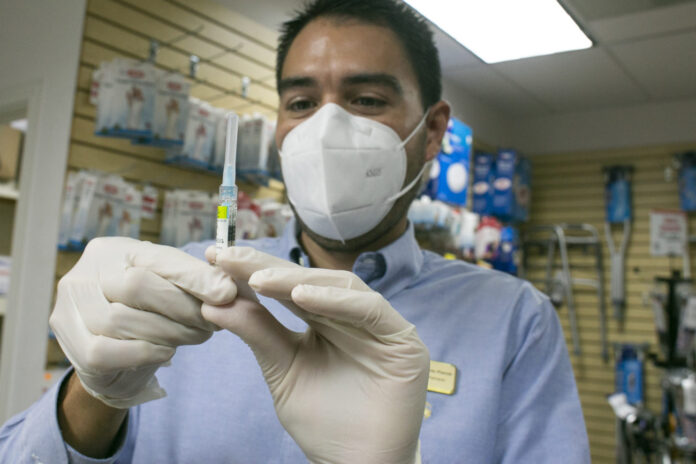HARLINGEN — When the pandemic broke out here, Rene Perez began charting jumps in ambulance calls as the coronavirus mixed with the flu season.
Last spring, residents were calling his ambulances to complain of flu-like symptoms.
For many patients, the diagnosis was influenza.
Some became the city’s first victims of the coronavirus.
In many cases, both viruses were landing residents in hospitals.
Now, flu season is back.
“Yes, it’s mixing in,” Perez, transport director with South Texas Emergency Medical Care Foundation, said, referring to COVID-19 cases and the flu. “We’re starting to see more flu calls. We anticipate an increase in flu and COVID as we move into the colder season.”
But this flu season is as unprecedented as the coronavirus.
Across the Rio Grande Valley and the nation, health officials are urging residents to vaccinate against the flu, warning the two viruses could multiply severe cases, overwhelming hospitals.
“We’re pushing more flu shots,” Josh Ramirez, the city’s public health director, said. “We want to prevent people from getting the flu as much as possible.”
Ramirez said residents contracting both infections could face severe outcomes.
“We want people to take the flu shot to have a fighting chance to survive COVID,” he said. “If your body is already fighting the flu, your immune system is weakened so COVID could be detrimental to the body. Where are they going to go? It’s going to overwhelm the hospitals again.”
Warning of hospital crisis
At Valley Baptist Medical Center, Dr. Christopher Romero said the flu shot could save lives — and help prevent a health crisis.
“This year more than ever it’s imperative for our community to take vaccination for the flu seriously, especially for those populations at higher risk for severe disease,” Romero, an internal medicine specialist who serves as the hospital’s physician advisor, said.
Every year, the flu leads to complications that have killed as many as 12,000 to 61,000 Americans, he said.
Many flu victims end up in hospitals.
“There is a significant impact from the flu any given year,” Romero said. “Annually, we see an increase in patients hospitalized with the flu during the winter months and it could be a very bad situation if we saw a large number of hospitalizations from both diseases simultaneously.”
Last summer, a surge of new COVID-19 cases led to hospitalizations that pushed the Valley’s hospitals over capacity, creating a health crisis.
“That’s a situation that could put a great deal of strain on health care resources, especially as our region recovers from a significant number of COVID cases,” Romero said. “We’d hate to go backwards.”

Controlling the spread
While the flu’s fatality rate stands at 0.1 percent, COVID-19’s mortality rate is believed to be about 2.8 percent.
However, Cameron County’s COVID-19 fatality rate has climbed to 4.48 percent, Romero said.
While Cameron County’s mortality rate ranks fifth in the state, he said, Hidalgo County’s ranks second.
“It’s multi-factorial, likely being driven by high rates of diabetes, hypertension and obesity in our community — and statistically Hispanics have a higher mortality rate,” he said. “Many of the risk factors for developing severe disease are the same for both viruses.”
Across the region, the Valley’s close-knit family structure appears to help spread the viruses faster than in many other populations.
“It’s socially structural, community-based, multi-generational — those types of interactions are the breeding ground for spreading these types of viruses,” Romero said.
Romero said residents following federal safety guidelines to control the spread of the coronavirus are also curbing the spread of the flu.
“The good thing is there are vaccines readily available for the flu and the same preventive measures put in place to slow the spread of COVID-19 also slow the spread of influenza,” he said. “The mask, hand-sanitization, stay home when sick — these measures go a long way to protect everyone in our community from both of these viruses.”




